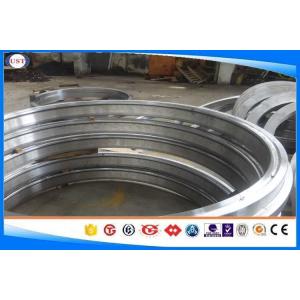
Add to Cart
| Category | Steel |
| Class | Carbon steel |
| Type | Standard |
| Designations | France: AFNOR CC 20 Germany: DIN 1.0402 Italy: UNI C 20 Sweden: SS 1450 United Kingdom: B.S. 040 A 20 , B.S. 070 M 20 United States: AMS 5032 , AMS 5032B , AMS 5045 , AMS 5045C , ASTM A108 , ASTM A29 , ASTM A510 , ASTM A519 , ASTM A544 , ASTM A575 , ASTM A576 , ASTM A659 , MIL SPEC MIL-S-11310 (CS1020) , SAE J403 , SAE J412 , SAE J414 , UNS G10200 |
| Properties | Conditions | ||
| T (°C) | Treatment | ||
| Density (×1000 kg/m3) | 7.7-8.03 | 25 | |
| Poisson's Ratio | 0.27-0.30 | 25 | |
| Elastic Modulus (GPa) | 190-210 | 25 | |
| Tensile Strength (Mpa) | 394.7 | 25 | annealed at 870°C more |
| Yield Strength (Mpa) | 294.8 | ||
| Elongation (%) | 36.5 | ||
| Reduction in Area (%) | 66.0 | ||
| Hardness (HB) | 111 | 25 | annealed at 870°C more |
| Impact Strength (J) (Izod) | 123.4 | 25 | annealed at 870°C more |
C1020 is forged from 2100 – 2300 º F down to a temperature in the region of 1650 – 1750 º F (1150*–1280 º C down to 900 – 950 º C.). The actual forging and finishing temperatures will depend on a number of factors, including overall reduction during forging and complexity of part being forged. Experience alone will determine near exact values for these two parameters. Parts are air cooled after forging.
This grade of steel is used for forged motor shafts, hydraulic shafts and pump shafts, as well as machinery parts.
A significant amount of this grade of steel is used in the as-forged condition, since it shows good machinability in this condition.
Little is to be gained, at this carbon level, by a quenching treatment.
At this carbon level, annealing after forging may not be necessary, and depending upon the hardness after forging and the complexity of the part being forged, machining may be carried out on the as-forged parts. If parts are of complex shape and hence there are structural variations throughout the part, then normalizing is in order.
Full annealing of small C1020 forgings is carried out between 1575 and 1650 º F (860 – 900 º C) followed by furnace cooling at 50 º F (10 º C) per hour, to 1300 º F (700 º C) and air cooling.
Normalizing is seldom carried out on carbon contents at this level, but may be used prior to surface hardening. The normalizing temperature range for this grade is typically 1650 – 1700 º F (900 – 930 º C) followed by air cooling. When forgings are normalized before, say, carburizing, the upper range of the normalizing temperature is used. When normalizing is the final treatment, the lower temperature range is used.
This grade of steel is not normally subjected to hardening and tempering treatments as the hardness obtained from such treatments would not warrant their being performed. Carburizing might be carried out at 1620 – 1690 º F (880 – 920 º C,) and carbonitriding at 1470 – 1600 º F (800 – 875 º C,)
Hardening of the carburized case would be performed at 1430 – 1500 º F (780 – 820 º C.) followed by a water quench and a tempering treatment at 300 – 400 º F (150 – 200 º C) to improve case toughness with a minimum effect on its hardness. Case hardness values of Rc 60 may be obtained on carburized C1020.
For parts with a diameter less than 2” (50mm) this grade has been found on occasion to show best machinability when normalized. Parts over 2” (50mm) diameter might be machined following forging or rolling.
This grade of steel may be welded by all normal methods: low-carbon electrodes are recommended.
Low-hydrogen electrodes are recommended together with preheat at 300 – 500 º F (150 – 260 º C.) to be maintained during welding, Cool slowly and stress relieve where possible.